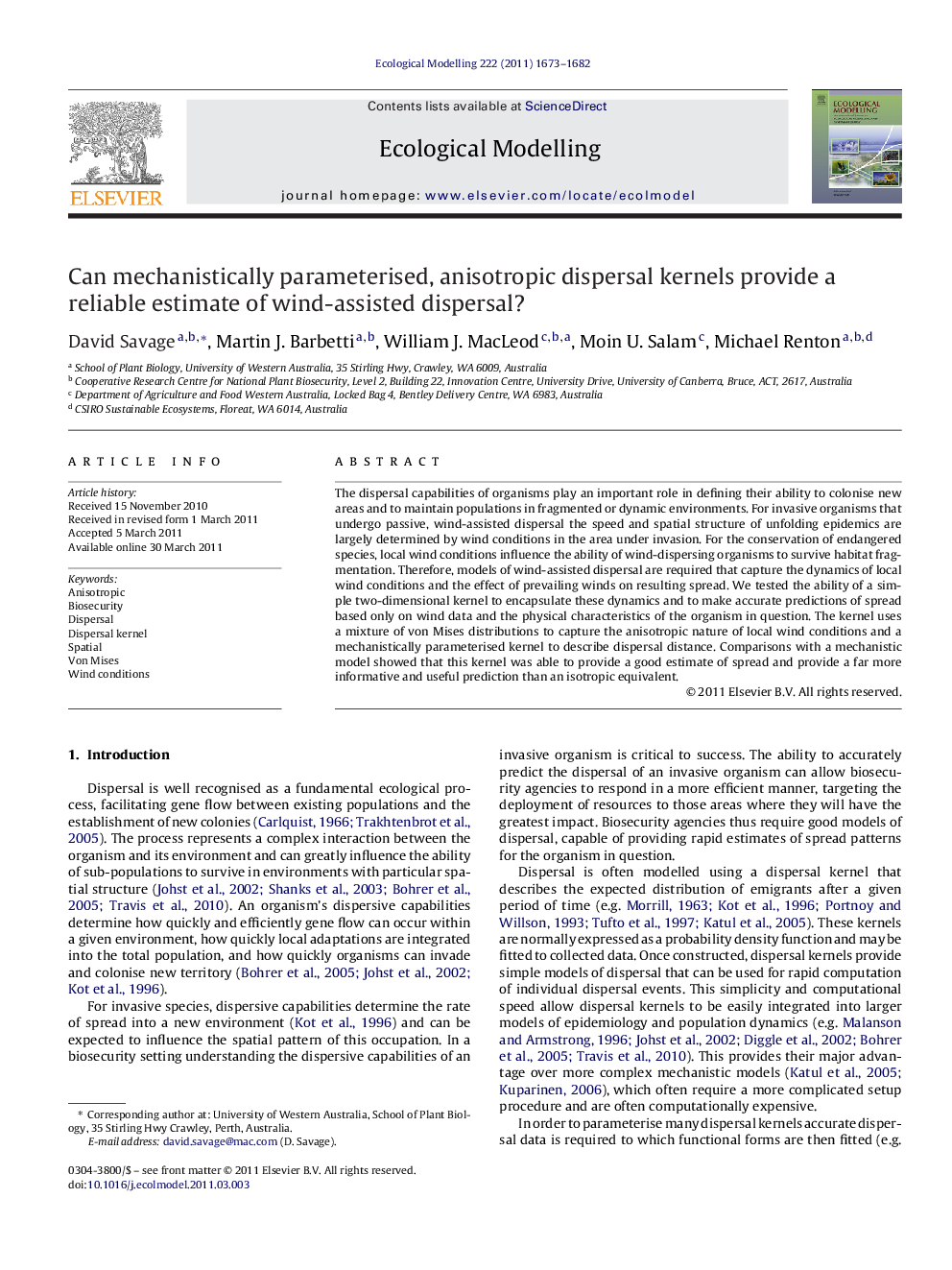| Article ID | Journal | Published Year | Pages | File Type |
|---|---|---|---|---|
| 4376830 | Ecological Modelling | 2011 | 10 Pages |
The dispersal capabilities of organisms play an important role in defining their ability to colonise new areas and to maintain populations in fragmented or dynamic environments. For invasive organisms that undergo passive, wind-assisted dispersal the speed and spatial structure of unfolding epidemics are largely determined by wind conditions in the area under invasion. For the conservation of endangered species, local wind conditions influence the ability of wind-dispersing organisms to survive habitat fragmentation. Therefore, models of wind-assisted dispersal are required that capture the dynamics of local wind conditions and the effect of prevailing winds on resulting spread. We tested the ability of a simple two-dimensional kernel to encapsulate these dynamics and to make accurate predictions of spread based only on wind data and the physical characteristics of the organism in question. The kernel uses a mixture of von Mises distributions to capture the anisotropic nature of local wind conditions and a mechanistically parameterised kernel to describe dispersal distance. Comparisons with a mechanistic model showed that this kernel was able to provide a good estimate of spread and provide a far more informative and useful prediction than an isotropic equivalent.
► Anisotropic kernels can be parameterised using wind speed and direction data. ► These kernels provide an estimate of spread comparable to that of a mechanistic model. ► Anisotropic kernels provide a better estimate than isotropic equivalents.
